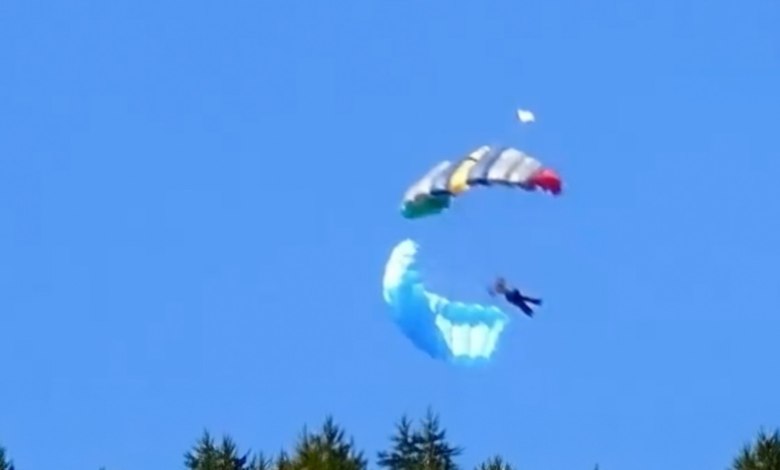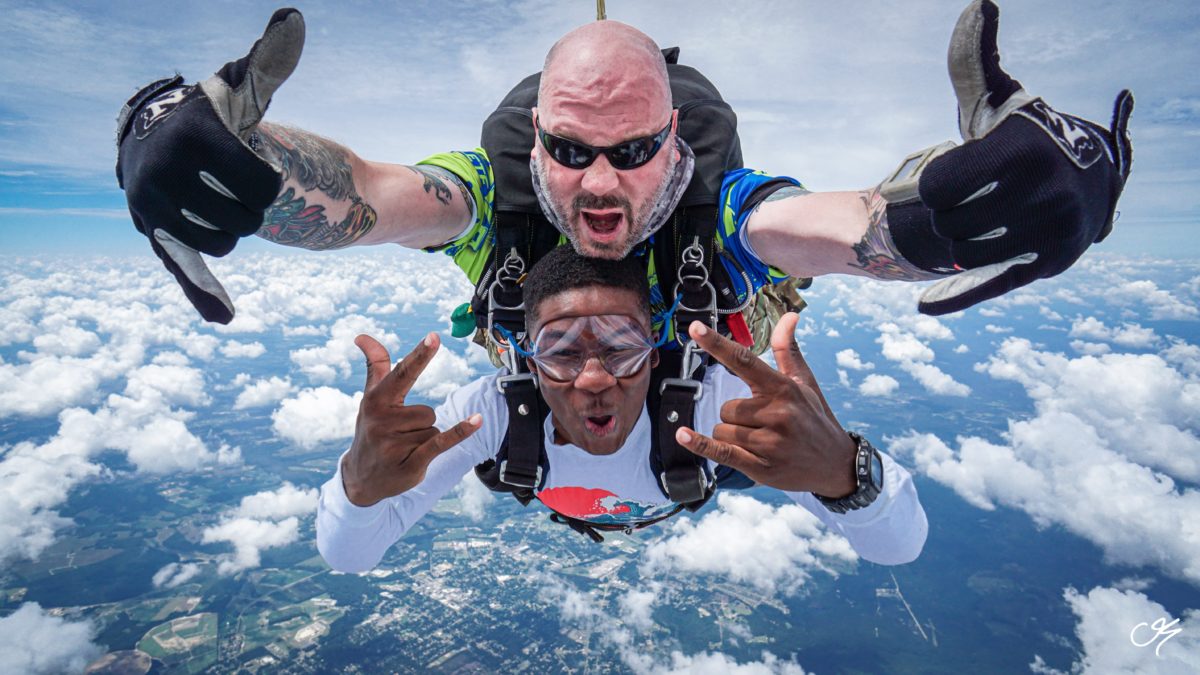Skydiving Accident: The Thrill, The Risks, and The Reality

Explore the reality of a skydiving accident. Understand the causes, prevention, and what to do if it happens. Expert insights into safety, stats, and stories from the sky.
The Rush and the Risk: Understanding Skydiving Accidents
Skydiving is one of those activities that straddles the line between exhilarating and terrifying. There’s something magnetic about the idea of jumping out of a plane and feeling completely weightless as the Earth rushes up to meet you. But let’s be real—as thrilling as it is, skydiving comes with a unique set of risks. One of the most serious among them is the possibility of a skydiving accident.
We hear about skydiving accidents in the news from time to time, often when something goes terribly wrong. But what really happens in a skydiving accident? How common are they, and what are the odds that something might go wrong during a jump? If you’re considering taking the leap or just curious about the mechanics of these incidents, this article is your all-access pass into the world of skydiving accidents.
What Exactly Is a Skydiving Accident?
A skydiving accident refers to any unintended incident that occurs during a skydive, leading to injury or fatality. These can happen due to equipment malfunction, human error, weather conditions, or even health issues mid-jump. Despite rigorous training and standardized safety protocols, the risk is never zero.
Most people imagine a skydiving accident as a parachute failing to open—a worst-case scenario. But in reality, most accidents occur due to improper landings, tangled parachute lines, or misjudged wind conditions. These accidents don’t always result in death, but they can cause severe injuries such as broken bones, spinal injuries, or concussions.
Skydiving accidents are not always a matter of poor planning or inexperience. Sometimes, even seasoned jumpers find themselves in unpredictable situations. It’s a harsh reminder that when you’re thousands of feet in the air, even a small mistake can have massive consequences.
How Common Are Skydiving Accidents?
Contrary to popular belief, skydiving accidents are relatively rare. According to data from organizations like the United States Parachute Association (USPA), skydiving has become significantly safer over the years. In fact, the fatality rate is roughly one in every 220,000 jumps.
That being said, non-fatal accidents are a bit more common, especially among first-time jumpers or those attempting complicated stunts. Injuries might range from ankle sprains to more serious trauma, but thanks to modern equipment and better training techniques, the overall safety record has improved significantly.
It’s also worth noting that many skydiving accidents are avoidable. A big chunk of incidents occur due to human error rather than equipment failure. So, while the sport is inherently risky, being responsible and well-prepared can make a world of difference.
Common Causes of Skydiving Accidents

Understanding the root causes of skydiving accidents is the first step toward prevention. Here are some of the most common contributors:
Equipment Malfunction
Although rare, parachute failures do happen. This could involve a main chute that doesn’t deploy correctly, tangled lines, or issues with the reserve chute. However, skydivers are trained to handle such situations and often have a backup chute to rely on.
Technological advancements have significantly improved the reliability of skydiving gear. Automatic Activation Devices (AADs) are standard in most rigs now, and they can deploy the parachute automatically if the skydiver fails to do so. Still, like any machinery, things can go wrong.
Human Error
Misjudging altitude, misreading wind direction, or failing to execute maneuvers correctly are some of the most frequent human errors that lead to accidents. First-time jumpers are especially susceptible, which is why tandem jumps with experienced instructors are the norm.
Even experienced skydivers are not immune to making mistakes. Overconfidence or attempting risky stunts without proper planning can lead to severe consequences. Precision and caution are vital at every step.
Weather Conditions
Strong winds, rain, and poor visibility can create dangerous situations mid-jump. Weather is a huge factor in determining whether or not a jump should take place. Reputable skydiving centers monitor forecasts rigorously before giving the green light.
Sometimes, accidents occur because jumpers ignore weather warnings or get caught in rapidly changing conditions. Wind gusts can alter a descent path, causing awkward landings or mid-air collisions.
Medical Emergencies
Though not as common, there have been cases where a skydiver suffers a medical emergency mid-air, like a heart attack or fainting episode. These situations are particularly perilous because they often come without warning and leave little room for immediate response.
Health checks before skydives are recommended, especially for individuals over a certain age or with known health issues. Ignoring physical warnings can lead to disastrous outcomes.
Real-Life Skydiving Accident Stories
Reading about real-life cases can be both sobering and enlightening. These stories help paint a clearer picture of what skydiving accidents look like and often come with valuable lessons.
One notable incident involved an experienced skydiver whose main chute got tangled during a solo jump. Fortunately, he managed to deploy his reserve chute in time, though he suffered a broken leg upon landing. His story emphasizes the importance of staying calm and following training protocols.
Another case involved a tandem skydive where the instructor had a stroke mid-jump. The student, who had zero experience, was unable to control the descent, resulting in a rough landing that caused severe injuries. The incident sparked discussions around stricter health checks for instructors.
Preventing Skydiving Accidents: Can They Be Avoided?
The short answer is: not entirely, but they can be significantly reduced. Prevention starts with comprehensive training, thorough equipment checks, and responsible decision-making. Here are some expert tips for preventing skydiving accidents:
Choose a Certified Skydiving Center
Always go with a reputable, certified skydiving center. Look for those affiliated with recognized bodies like the USPA. These centers follow strict safety protocols, use well-maintained equipment, and employ certified instructors.
Avoid choosing a center based solely on price. Safety should always come first, and cutting corners in this sport can be life-threatening.
Don’t Skip the Training
Whether it’s your first jump or your hundredth, training matters. Pay attention to the safety briefings, practice emergency drills, and don’t hesitate to ask questions if something is unclear. The more informed you are, the better equipped you’ll be to handle unexpected situations.
Training sessions often simulate emergency scenarios to prepare jumpers mentally and physically. These drills can be lifesaving in real-world applications.
Check Your Gear Every Time
Before every jump, do a thorough inspection of your gear. Check the parachute, harness, AAD, and other essential components. Many accidents are caused by minor oversights that could have been caught during a routine check.
Also, never be shy about double-checking your instructor’s gear if you’re going tandem. It’s your life on the line, and no professional will take offense to a little extra caution.
Psychological Impact of Skydiving Accidents
While physical injuries are the most obvious consequence of a skydiving accident, the psychological impact is often underestimated. Survivors frequently deal with PTSD, anxiety, and depression, especially if the accident involved a fatality.
Jumping again after surviving a skydiving accident is a personal decision. Some people return to the sky to conquer their fear, while others hang up their parachute for good. There is no right or wrong choice—only what feels right for the individual.
Therapy and support groups can help those who struggle with emotional fallout. Talking through the event with someone who understands the unique challenges of skydiving trauma can be incredibly healing.
Skydiving Accident Statistics and Trends

Let’s talk numbers for a second. According to the USPA, out of over 3 million jumps in a recent year, only about 10 resulted in fatalities. That puts the odds of dying in a skydiving accident lower than dying in a car crash or even a lightning strike.
Non-fatal injuries occur more frequently but are often preventable. Trends show that as equipment continues to evolve and training improves, accident rates are steadily decreasing. Tandem jumps remain the safest form of skydiving, largely due to the experience of instructors and the redundancy of gear.
Here’s a quick table to summarize:
| Year | Total Jumps | Fatal Accidents | Fatality Rate |
|---|---|---|---|
| 2020 | 2.8 million | 11 | 0.39 per 100,000 |
| 2021 | 3.2 million | 10 | 0.31 per 100,000 |
| 2022 | 3.3 million | 9 | 0.27 per 100,000 |
Expert Quotes on Skydiving Safety
“Skydiving is as safe as the precautions you take. The gear won’t fail you, but your choices might.” — John Marcus, Professional Skydiving Instructor
“Every time I jump, I go through the same mental checklist. It’s what keeps me sharp and alive.” — Karen Liu, Competitive Skydiver
“Fear is natural, but preparation is power. Accidents don’t care if you’re scared—they care if you’re sloppy.” — Miguel Rojas, USPA Safety Advisor
Frequently Asked Questions About Skydiving Accidents
Q: How often do parachutes fail during a skydive?
A: Parachute failures are extremely rare, occurring in about 1 out of every 1,000 jumps. Even when the main chute fails, a reserve chute is always available and usually resolves the issue safely.
Q: What should I do if I witness a skydiving accident?
A: Stay calm, call emergency services immediately, and avoid moving the injured person unless absolutely necessary. If you’re trained in first aid, provide assistance until help arrives.
Q: Is it safer to skydive solo or with an instructor?
A: Tandem jumps with an instructor are significantly safer for first-time jumpers. The instructor handles the technical aspects, reducing the chance of user error.
Q: Can health issues cause skydiving accidents?
A: Yes. Heart attacks, strokes, or fainting spells mid-air can be fatal. It’s important to undergo a health check, especially if you have underlying conditions or are over a certain age.
Q: How long does it take to recover from a skydiving injury?
A: Recovery time varies depending on the severity of the injury. Minor sprains might heal in a few weeks, while serious injuries like fractures or spinal damage can take months and may require surgery or rehab.
Q: Can you survive a skydive without a parachute?
A: There are extremely rare cases of people surviving falls from extreme heights without a functioning parachute, but these are exceptions and often involve sheer luck and unique circumstances like falling into snow or dense foliage.
Final Thoughts: Living with the Risk
Skydiving is not for the faint of heart, and skydiving accidents are a sobering reminder of the sport’s inherent risks. But with proper training, quality equipment, and a vigilant mindset, most of these dangers can be minimized. If you’re going to chase the thrill, do it smartly.
Adventure will always come with risks—but that doesn’t mean we can’t manage them. Stay safe, fly high, and respect the sky.





